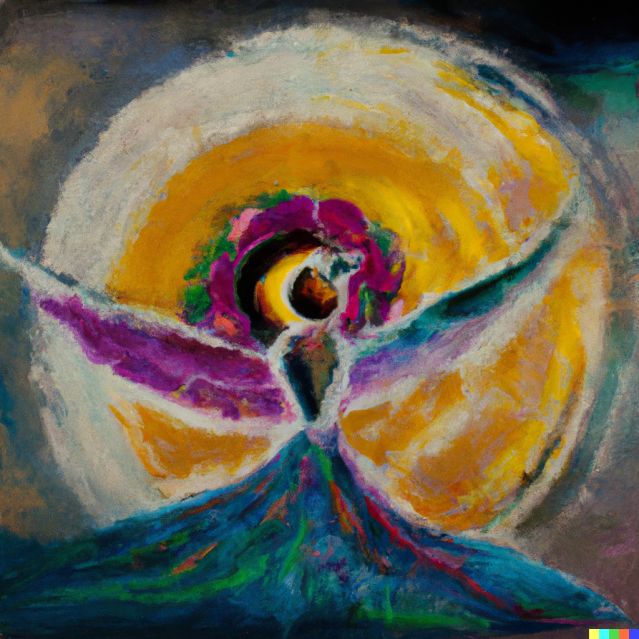Intelligence
How Do You Know What You Know?
Exploring different types of knowledge and ways of knowing.
Posted July 22, 2024 Reviewed by Michelle Quirk
Key points
- There are many different ways that people come to understand the world utilizing diverse kinds of knowledge.
- Understanding the many types of knowledge and intelligences allows us to determine our dominant capacities.
- By better understanding, we can increase self-awareness, creativity, comprehension, and critical thinking.
Perhaps you’ve not given much thought to how you know what you know. Maybe you’ve grouped knowledge and intelligence together, as a unidimensional proficiency, beneath a single umbrella, like "education." However, neither knowledge nor intelligence are singular constructs. There are many different types of knowledge and multiple ways of knowing.
Generally speaking, kinds of knowledge refer to different types of information and skills that people acquire, whereas, types of intelligence (or, ways of knowing) refer to different cognitive abilities and capacities. Developing a more nuanced understanding of the diverse aspects of human cognition can contribute valuable applications for everyday life, helping you better recognize your strengths and weaknesses, and improving self-awareness, communications, comprehension, problem-solving, creativity, collaboration, judgments, and critical thinking (Lave & Wenger, 1991).
Types of Knowledge
Different kinds of knowledge reflect how we understand and interact with the world. Each type of knowledge contributes to our holistic understanding of the world and informs the various aspects of our lives.
The two types of knowledge that are most often associated with formal education are empirical knowledge, which is knowledge derived from experience, observation, and experimentation, and theoretical knowledge, which involves ideas, concepts, and abstractions able to help us understand specific phenomena and why certain methods are more successful than others. But, there are many more types of knowledge to become aware of, although there is overlap between the constructs.
Practical knowledge (i.e., "street smarts") is picked up from real-life experiences such as on-the-job training or internships. Common sense is a colloquial term that is sometimes used interchangeably with practical knowledge, but it is really more of a subset reflecting the general knowledge one holds to make judgments without much reflection (e.g., don’t touch a hot stove). Expressive or explicit knowledge is information that is objective and easy to communicate, codified through articles, documentation, books, and videos. Tacit or implicit knowledge is more subjective information, based on insight, expertise, and intuition. Tacit knowledge is more difficult to formalize and transfer.
There are additional types of knowledge that help explain things like cultural norms, values, and world views. Moral knowledge reflects essential guiding principles for behavior and decision-making such as "murder is wrong" or "love is a virtue," differing from moral opinions, which refer more to individual or cultural preferences (Sirota, 2019). Spiritual knowledge entails spiritual and existential understandings as well as one's sense of purpose beyond everyday existence. Aesthetic knowledge relates to the deep meaning and appreciation of beauty, art, and cultural expressions—for example, the way music impacts emotions or the way visual art may reflect one’s experiences.
Finally, there are intra- and interpersonal knowledges (Okwuduba et al., 2021). Reflective or intrapersonal knowledge occurs within the self, including introspection, self-awareness, and critical thinking. Interpersonal knowledge relates to skills and understanding of relations between people, including social skills. With so many different kinds of knowledge, it makes sense that there are many different types of intelligence as well. The next section clarifies various types of intelligence and highlights the diversity of human capabilities, in opposition to the outdated notion of a single, general intelligence.
Ways of Knowing or Intelligences
There are many different ways that people come to understand the world; in other words, there are diverse types of intelligence. Reflecting on different intelligences helps us understand how each person relies on ways of learning that are more or less resonant with their inherent capacities. Howard Gardner's Theory of Multiple Intelligences (1983) is a cornerstone for exploring multiple intelligences. He has enumerated eight types of intelligence.
There are several ways of knowing that are most frequently associated with educational or school learning. Linguistic-verbal intelligence is the ability to use language effectively, including reading, writing, speaking, and understanding language. Logical-mathematical intelligence is a capacity for logical reasoning, problem-solving, and mathematical calculation. You can see from these first two types of intelligence that people may express more or less of each aptitude. A person with strong linguistic intelligence may more enjoy reading and writing whereas someone with stronger logical-mathematical intelligence may find solving computations satisfying.
Beyond the basics we learn in school are many other intelligence dimensions. Spatial intelligence speaks to an ability to recognize and manipulate the position of objects and spaces in relation to oneself, like doing puzzles or drawing. This is different from bodily-kinesthetic intelligence, which refers to a person being able to skillfully use their body for expression or to achieve goals, such as athletes and dancers (Shearer, 2018). Musical intelligence is the specific talent for creating and performing music, so you may recognize greater sensitivity to rhythm, pitch, melody, and harmony.
Just as with different kinds of knowledge, there are intra- and interpersonal intelligences. Interpersonal intelligence is the capacity to understand and interact effectively with others (e.g., empathy, social skills) whereas intrapersonal intelligence is the ability to understand oneself (e.g., self-awareness of emotions, motivations, and inner states; Okwuduba et al., 2021). A related intelligence is naturalistic intelligence or being adept at recognizing and categorizing features of the environment (e.g., flora and fauna).
More recently, theorists have pointed to additional types of intelligence (Collins & Evans, 2021). Emotional intelligence, for example, is the ability to recognize and manage one's own emotions, as well as the emotions of others. Existential intelligence reflects the capacity to ponder deep questions about human existence. Image manipulation is a capacity for visualizing images and image changes before implementation. Finally, collaborative intelligence describes a group of people or a network able to create better shared knowledge.
A final area for consideration is creativity. Creativity is considered a type of intelligence, involving various cognitive capacities and problem-solving skills, as well as a way of knowing, encompassing insights, exploration, and expressive communication (Jauk, Benedek, Dunst, & Neubauer, 2013). Moreover, creativity is the tendency to solve problems or create new things in novel ways, involving expertise, knowledge, intelligence, personality and individual differences, motivation, and the environment. While empiricism is highly regarded in scientific and academic contexts, creativity is also integral to human advancement. Creativity is required to generate novel ideas, hypotheses, and solutions, accelerating innovation, artistic expression, and conceptual breakthroughs that can challenge existing paradigms and drive progress in various fields.
In conclusion, understanding the many types of knowledge and ways of knowing allows us to determine our specific capacities for learning, problem-solving, communicating, and development. Further, it promotes more informed decision-making and advances multidimensional research and scholarship. By developing a nuanced appreciation of different knowledges and intelligences, individuals and organizations can foster more inclusive strategies, appreciate individual differences in approaching tasks, and create a rich environment for learning and innovation.
References
Collins, H. & Evans, R. (2021). Interactional Expertise and Embodied Knowledge: Extending the Boundaries. Studies in History and Philosophy of Science Part A, 87, 72–80.
Gardner, H. (1983). Frames of Mind: The Theory of Multiple Intelligences. New York, NY: Basic Books.
Jauk, E., Benedek, M., Dunst, B. & Neubauer A. C. (2013). The relationship between intelligence and creativity: New support for the threshold hypothesis by means of empirical breakpoint detection. Intelligence. 41, 4, 212–221.
Okwuduba, E.N., Nwosu, K.C., Okigbo, E.C., Samuel, N.N. & Achugbu C. (2021). Impact of intrapersonal and interpersonal emotional intelligence and self-directed learning on academic performance among pre-university science students. Heliyon, 31, 7(3).
Shearer B. (2018). Multiple Intelligences in Teaching and Education: Lessons Learned from Neuroscience. J Intell. 6,3, 38
Sirota, K.G. (2019). Emotion, Morality, and Interpersonal Relations as Critical Components of Children's Cultural Learning in Conjunction with Middle-Class Family Life in the United States. Front Psychol.





